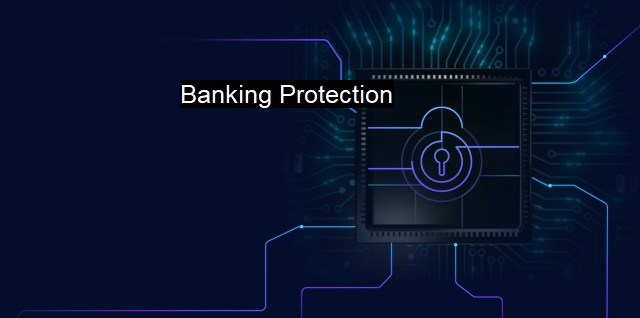What is Banking Protection?
Guide to Banking Protection: Ensuring Cybersecurity in Financial Transactions and Sensitive Banking Information with Antivirus Software
Banking protection refers to a dedicated suite of security measures employed by financial institutions and service providers to safeguard financial data and systems from unauthorized access, cyber threats, and other security breaches. The drive for this advanced protection comes from global financial systems' increased exposure to and vitality for cyber-attacks such as phishing, fraud, data theft, ransomware, and Distributed Denial of Service (DDoS) attacks.One of the key features of banking protection is Data Encryption, which protects sensitive data by translating it into a code that can only be deciphered using a decryption key. This procedure shields critical financial data in transmission and at rest, ensuring that only authorized personnel can access it. In the case of any unauthorized attempt, all the perpetrator would find is encrypted gibberish.
Another core component of banking protection is Antivirus software. Antivirus programs function by identifying, neutralizing, and removing harmful software from the system, thereby, providing an important defence layer against traditional malware and newer variants. The sophistication of antivirus programs has escalated massively to counter-attack the escalating complexity of cyber threats. They now have capabilities such as ransomware protection, spyware removal, firewall protection, and more.
Multifactor authentication bolsters banking security further by adding an extra verification step during the login process – this could be a fingerprint scan, security question, unique code sent to an associated email or mobile number, etc. This strictly blocks unauthorized system access even in cases where the primary access authentication (password) has been compromised as the intruder would also need to bypass the succeeding security layers, which is highly unlikely.
Firewalls are quintessential to banking protection. These sophisticated defences monitor incoming and outgoing network traffic based on predetermined security measures. They block suspicious packets/data, form a robust first line of defence against virus attacks, worms, malicious bots, and prevent unauthorized system intrusion.
Intrusion Detection Systems (IDS) and Intrusion Prevention Systems (IPS) complement firewalls in banking protection. These systems scrutinize network traffic for suspicious activities and signs of cyber attacks, then alert the system administrators; if an IPS is operational, it goes a step further to block suspected traffic, hence preventing cyber threats from seeping into the system.
Training is also a key element of banking protection strategy. Ensuring that all employees, from top-level management to junior staff, understand the cybersecurity threats they're up against, and how to detect and avoid them is integral to a thorough cybersecurity strategy. After all, a firm's level of cybersecurity is only as good as its least informed employee.
Regular software updates/upgrades are necessary for banking protection as updates often address potential security vulnerabilities and reduce exposure to exploitation. Regulators also play a crucial role in reinforcing banking protection by setting and enforcing cyber security regulations and frameworks that banks have to adhere to.
In the technology-dependent world of today, banks are massively dependent on IT for operations like credit card processing, ATM withdrawal, electronic money transfers, etc. This dependence, coupled with the wealth of sensitive data that banks hold, put them constantly on the radar of cybercriminals, making it imperative for banks to have top-notch security in place to safeguard important data and financial systems.
Therefore, banking protection is an umbrella term for the multitude of cybersecurity weapons and procedures used to defend banking systems against the ever-evolving array of cyber threats. despite the unavoidability and comprehensiveness of these tools, human judgement – of the regulators, employees, and customers – remains a core determinant of its effectiveness.

Banking Protection FAQs
What is banking protection?
Banking protection is a security feature offered by antivirus software that safeguards users' online banking activities from threats like phishing attacks and malware. It ensures secure transactions and protects sensitive information such as login credentials, account numbers, and PINs.How does banking protection work?
Banking protection software uses several techniques like encryption, web filtering, and real-time scanning to secure banking transactions. It encrypts the communication between the user's device and the bank's server to prevent interception by hackers. It also checks for any malicious links or websites and blocks them. Additionally, it scans the system for malware and alerts users if any suspicious activity is detected.Is banking protection necessary?
Yes, banking protection is necessary. With the increasing number of cyber-attacks and data breaches, it is crucial to protect sensitive financial information from theft. Banking protection provides an extra layer of security that ensures safe online transactions and protects users' money from cybercriminals.What are the benefits of banking protection?
The benefits of banking protection software are manifold. It ensures secure online transactions, protects sensitive financial information, and guards against phishing attacks and malware. It also alerts users of any suspicious activity and regularly updates itself to tackle the latest threats. By using banking protection software, users can have peace of mind knowing that their online banking activities are safe and secure.| | A | | | B | | | C | | | D | | | E | | | F | | | G | | | H | | | I | | | J | | | K | | | L | | | M | |
| | N | | | O | | | P | | | Q | | | R | | | S | | | T | | | U | | | V | | | W | | | X | | | Y | | | Z | |
| | 1 | | | 2 | | | 3 | | | 4 | | | 7 | | | 8 | | |||||||